
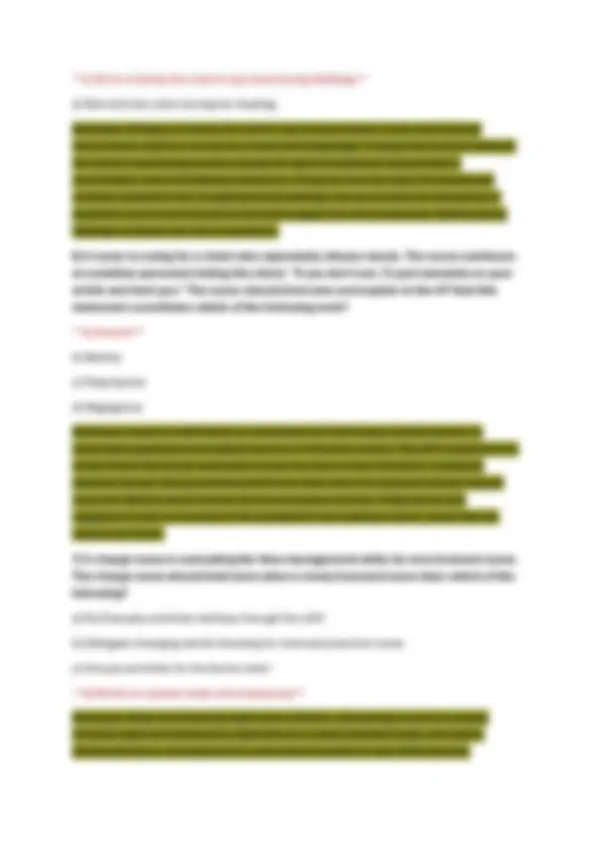
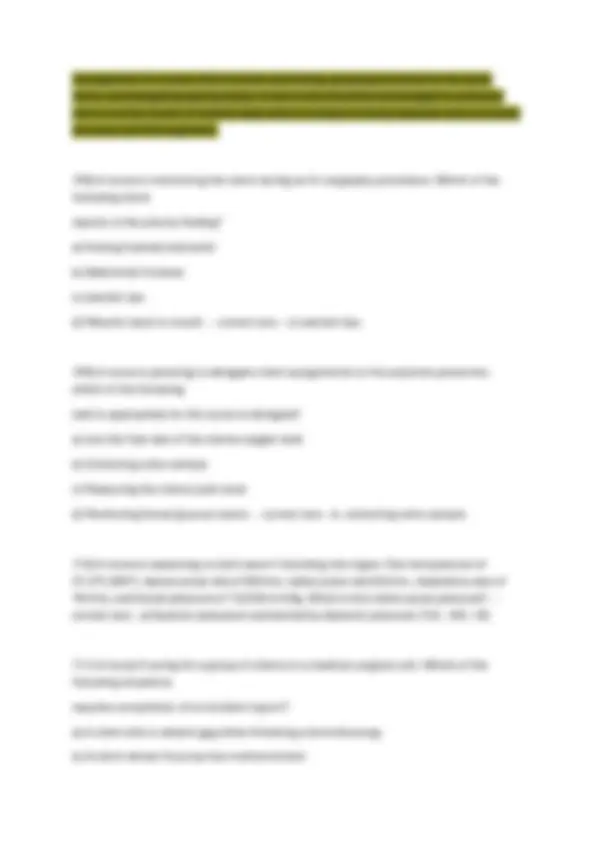
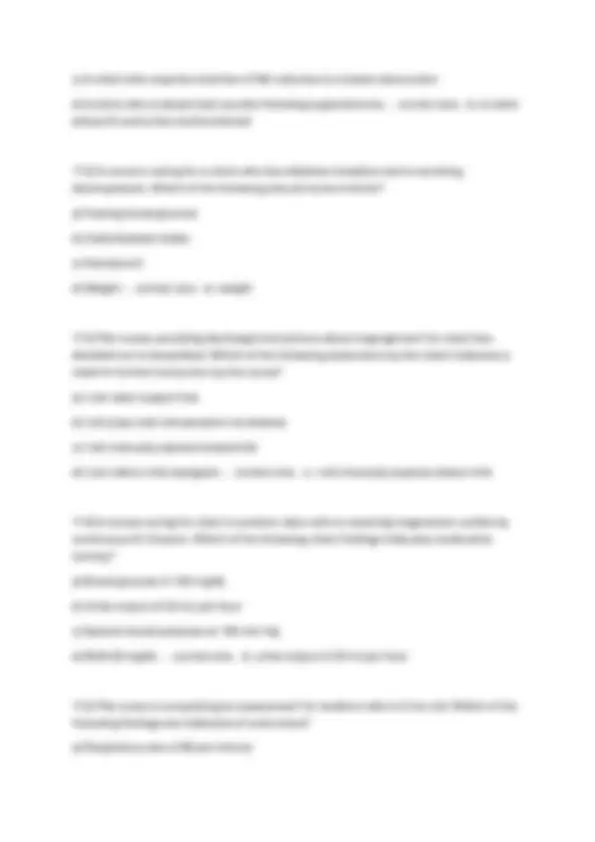
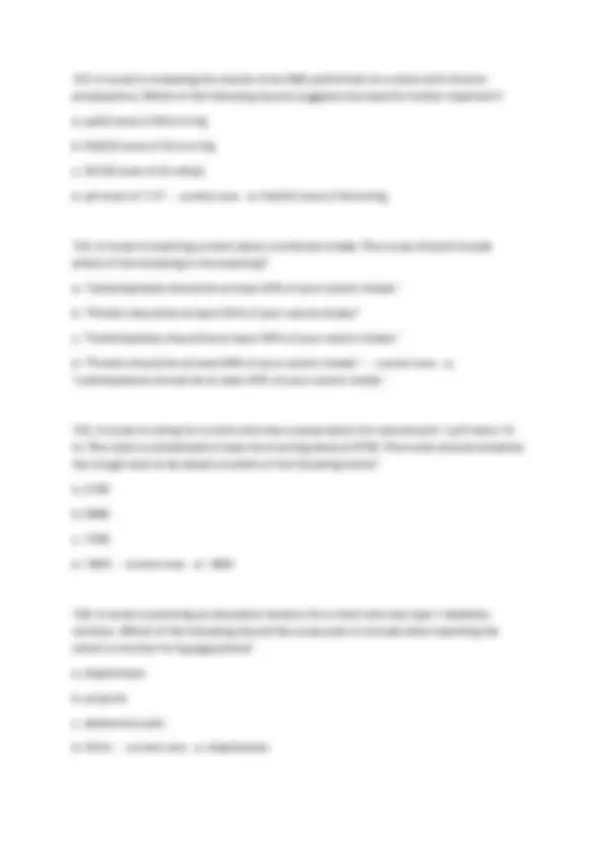
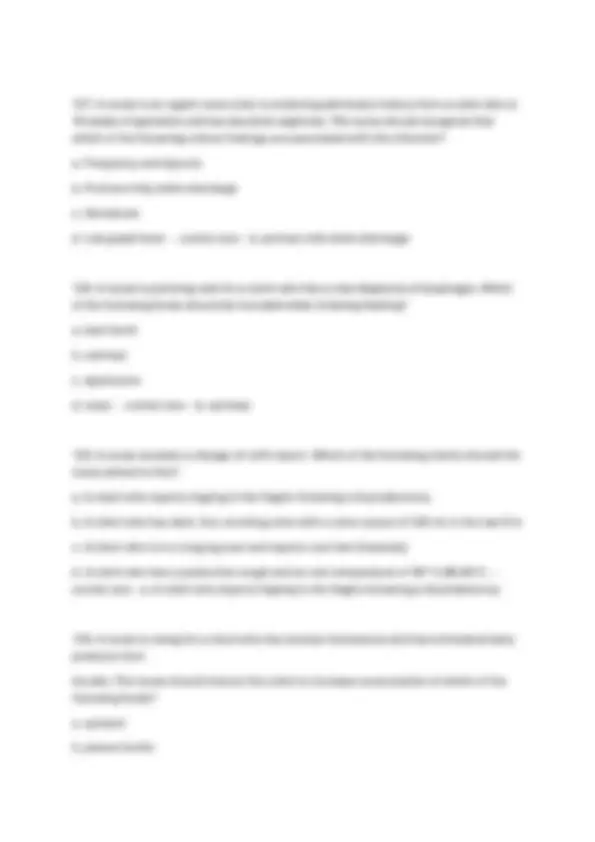
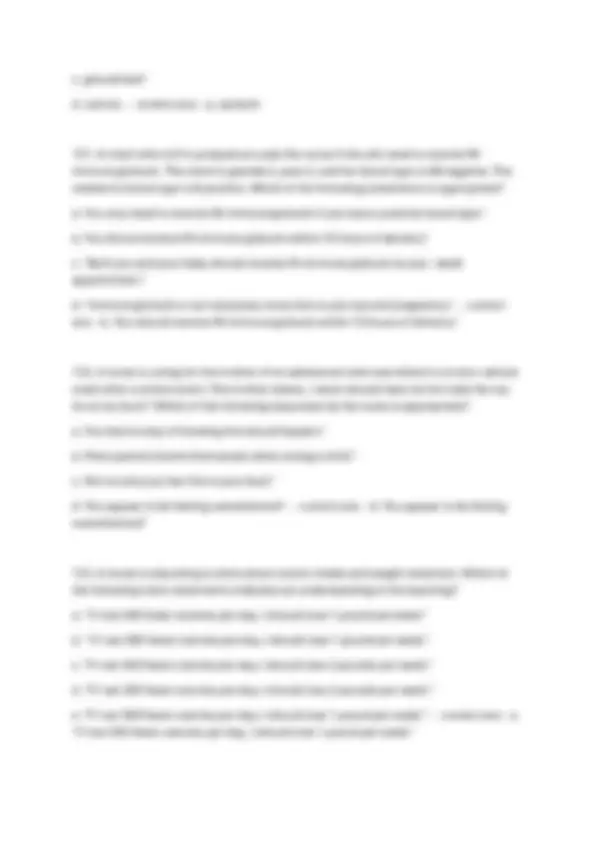
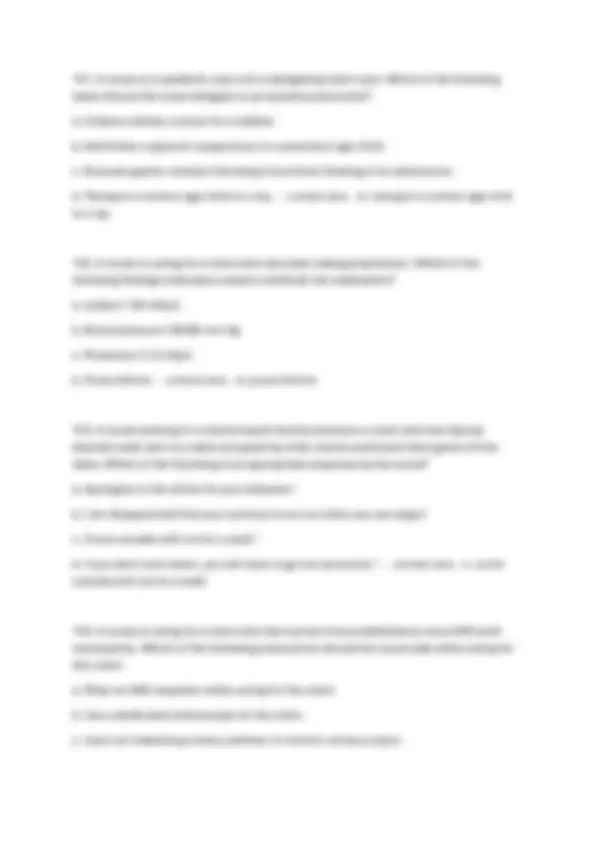
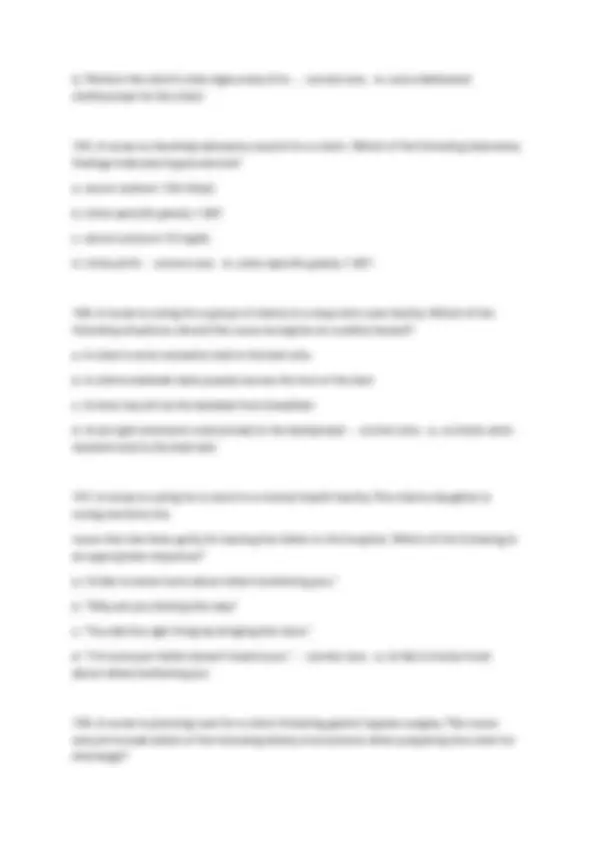
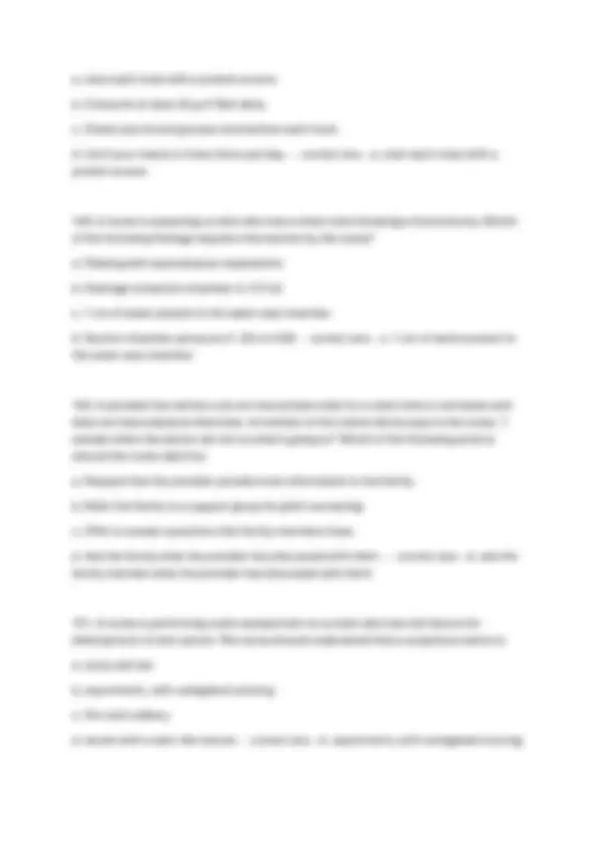
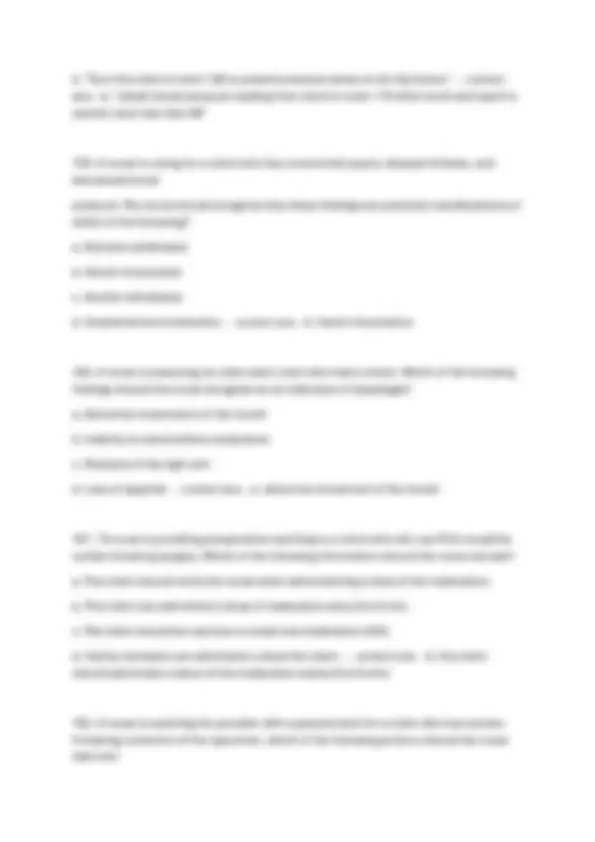
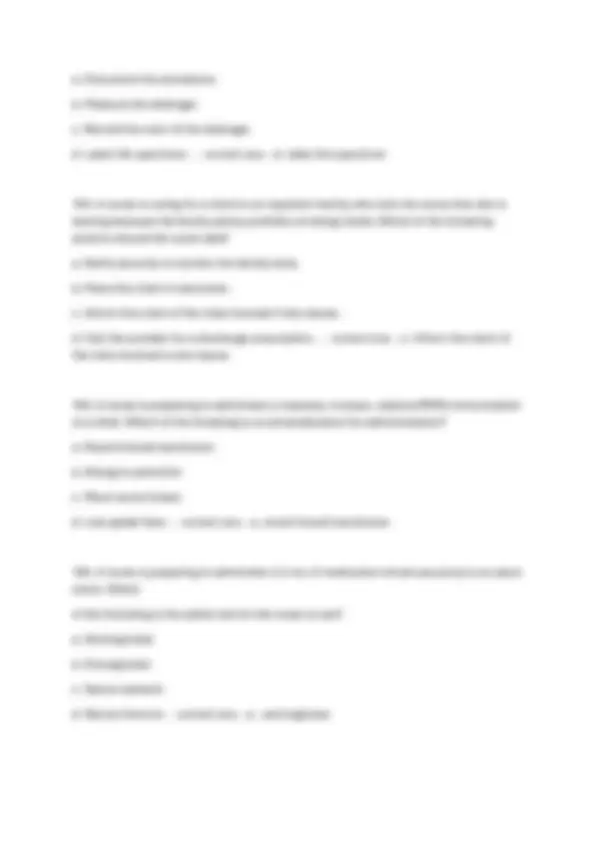
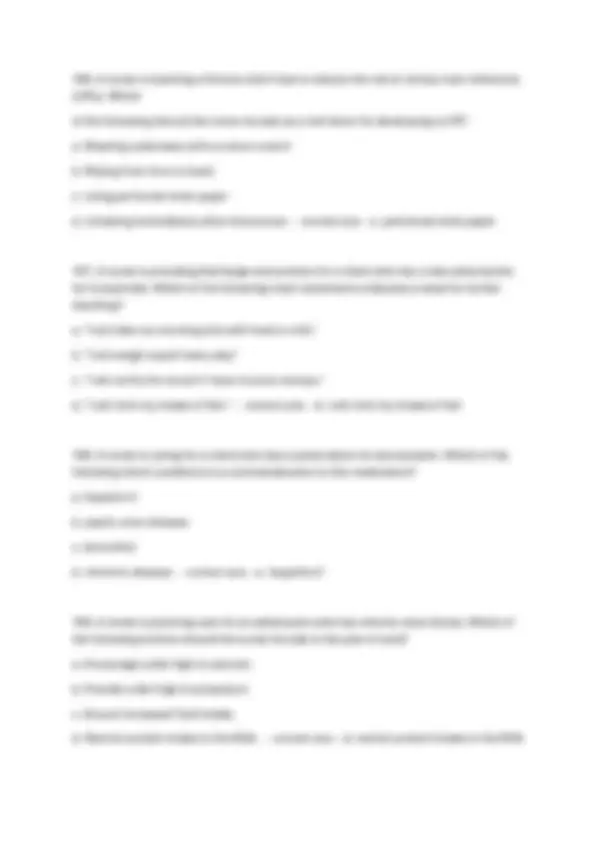
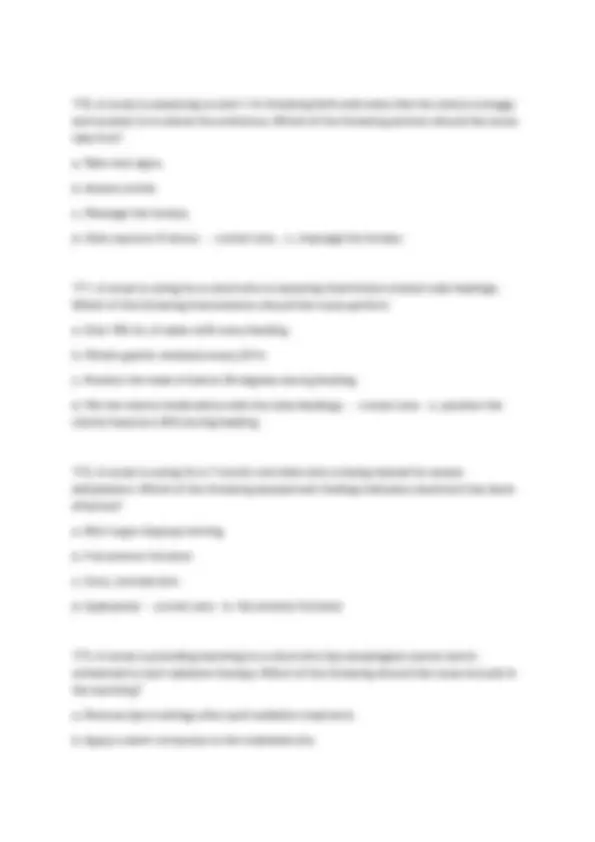
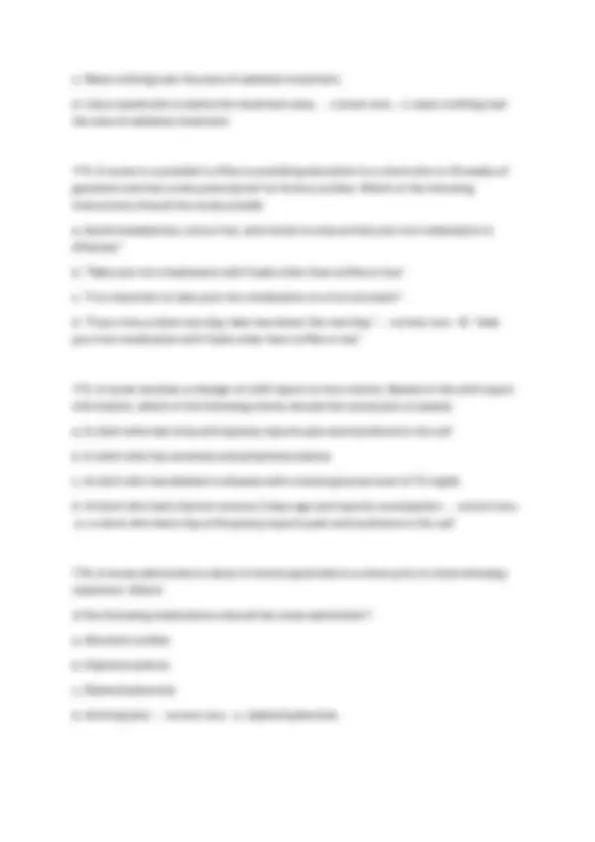
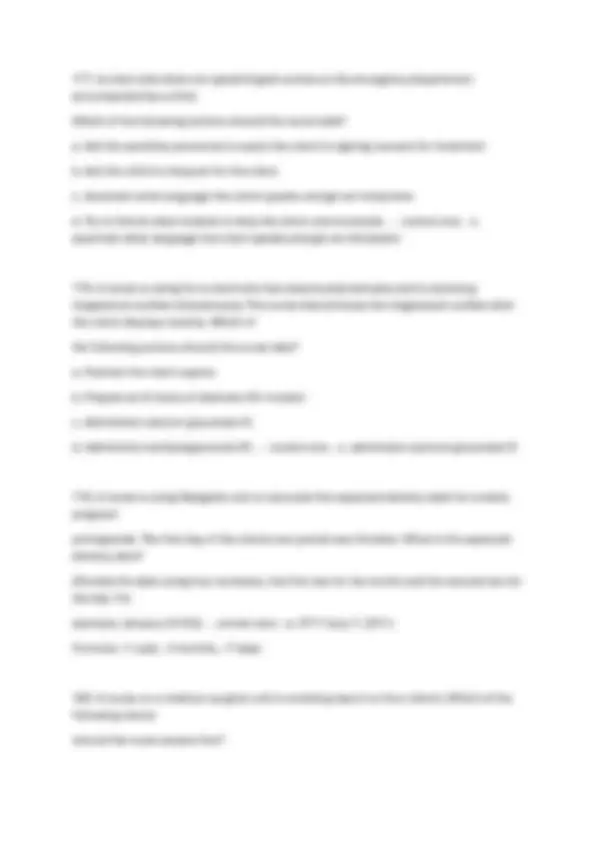
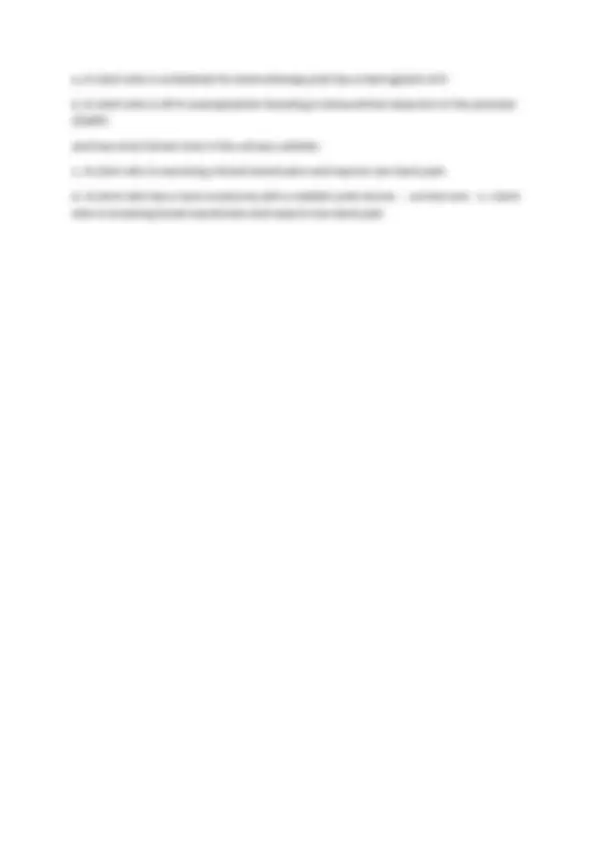


Study with the several resources on Docsity

Earn points by helping other students or get them with a premium plan


Prepare for your exams
Study with the several resources on Docsity

Earn points to download
Earn points by helping other students or get them with a premium plan
Community
Ask the community for help and clear up your study doubts
Discover the best universities in your country according to Docsity users
Free resources
Download our free guides on studying techniques, anxiety management strategies, and thesis advice from Docsity tutors
A.T.I Comprehensive Exit Exam 2025 Study Guide: High-Yield Nursing Practice Questions, In-Depth Rationales, and Expert Tips to Pass the Final Exam on Your First Try
Typology: Exams
1 / 24

This page cannot be seen from the preview
Don't miss anything!

















1) The nurse is providing teaching to a client who has mild persistent asthma and has been prescribed montelukast. Which of the following statements should the nurse^1 include in teaching? a) This medication can be used to help you when have an acute asthma attack b) This medication should be taken before exercise and physical activity c) This medication can be taken for 10 days and then gradually discontinued d) This medication helps decrease swelling and mucus production Rationale: Montelukast is a leukotriene receptor antagonist, primarily used as a long- term control medication for asthma. Its mechanism of action involves blocking leukotrienes, which are inflammatory mediators that contribute to airway swelling (edema), mucus production, and bronchoconstriction in asthma. Therefore, teaching that this medication helps decrease swelling and mucus production accurately describes its therapeutic effect. It is not for acute attacks, nor is it taken just before exercise for immediate relief (though it helps prevent exercise-induced symptoms with regular use), and it's a daily maintenance drug, not for short-term use. 2) A nurse on the medical surgical unit is receiving reports on four clients. Which of the following client should the nurse assess first? a) A client who is receiving warfarin and has an INR of 3. b) A client who has an acute kidney injury, a creatinine of 4 mg/dL, and a BUN 52 mg/dL c) A client who had an NG tube inserted 6 hr ago and has abdominal distention d) A client who is 4 hr postoperative following a thyroidectomy and reports fullness in the back of the throat Rationale: The nursing priority is to assess the client with potential airway compromise. A report of "fullness in the back of the throat" after a thyroidectomy is a critical sign that could indicate a developing hematoma or swelling compressing the trachea, leading to airway obstruction. This is an immediate, life-threatening emergency. While the other conditions require attention (elevated INR, acute kidney injury, abdominal distention
with an NG tube), they do not pose an immediate and direct threat to the client's airway or life as acutely as potential airway compromise post-thyroidectomy. 3) A nurse is assessing a client who has pericarditis. Which of the following findings is priority? a) Paradoxical pulse b) Dependent edema c) Pericardial friction rub d) Substernal chest pain Rationale: A paradoxical pulse (pulsus paradoxus) is a significant decrease in systolic blood pressure during inspiration. In the context of pericarditis, this finding is a critical indicator of potential cardiac tamponade, a life-threatening complication where fluid accumulation in the pericardial sac puts pressure on the heart, impeding its ability to fill and pump blood. While a pericardial friction rub and substernal chest pain are characteristic symptoms of pericarditis, and dependent edema can be a related finding, paradoxical pulse signals an urgent, emergent condition that requires immediate intervention. 4) A charge nurse is providing teaching to a new licensed nurse on how to cleanup surfaces contaminated with blood. Which of the following agents^2 should the nurse include in the teaching? a) Hydrogen peroxide b) Chlorhexidine c) Isopropyl alcohol d) Chlorine bleach Rationale: According to infection control guidelines, a diluted solution of chlorine bleach (sodium hypochlorite), typically a 1:10 to 1:100 dilution, is the recommended disinfectant for cleaning surfaces contaminated with blood and other potentially infectious materials. It is effective against a broad spectrum of microorganisms, including bloodborne pathogens like HIV and hepatitis viruses. Hydrogen peroxide, chlorhexidine, and isopropyl alcohol have various uses, but chlorine bleach is the standard for blood spill cleanup on surfaces. 5) A nurse is preparing to feed a newly admitted patient with dysphagia. Which of the following actions should the nurse take? a) Instruct the client to lift her chin when swallowing b) Discourage the client from coughing during feedings
management for nurses often involves prioritizing, grouping activities for the same client, and delegating appropriately. A new nurse should be encouraged to complete one or a small cluster of related tasks before moving to entirely separate ones to ensure accuracy and thoroughness.
c) A client who requires insertion of NG tube due to a bowel obstruction d) A client who is absent bell sounds following a gastrectomy - - correct ans- - b. A client whose IV pump has malfunctioned
a. Eggs b. Milk c. Shrimp d. Peanuts - - correct ans- - a. eggs
c. ground beef d. carrots - - correct ans- - a. spinach
d. Monitor the client's vital signs every 8 hr. - - correct ans- - b. use a dedicated stethoscope for the client
c. Hospital administrators d. Protocols in other hospitals - - correct ans- - b. evidence-based practice data
a. Document the procedure. b. Measure the drainage. c. Record the color of the drainage. d. Label the specimen. - - correct ans- - d. label the specimen